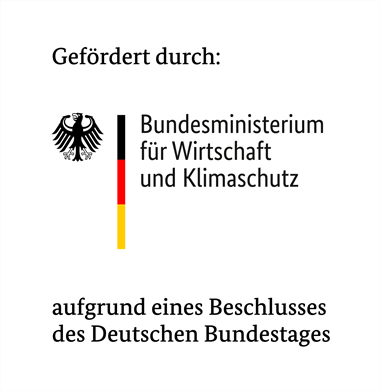Since the late 1980s, there has been renewed interest in contra-rotating propellers (CRP). Their use is particularly beneficial under high thrust load conditions. It is estimated that energy savings of up to 10% can be achieved. Therefore, a CRP used as the main propulsion system can represent an effective means of reducing CO2 emissions.
Design and Optimization Tool for a CRP Propulsion Concept 2024 – 2026

| Title: | KonRo – Design and Optimization Tool for a CRP Propulsion Concept |
| Term: | 2024 – 2026 |
| Project manager: | Katrin Hellwig-Rieck |
| Funding: | Bundesministerium für Wirtschaft und Klimaschutz |
| Project administration: | EuroNorm GmbH |
| Reg.-No.: | 49MF23104 |
Not only the energy savings but also improved maneuverability and, depending on the propulsion concept, a potential increase in safety compared to single propellers — due to the redundancy provided in case of a propeller failure — make the CRP an attractive option for main propulsion systems. The arrangement of the TWIN-CRP at the aft ship is identical to that of a single propeller. The application of CRP systems is primarily seen in specialized vessels, such as fishing vessels, research ships, and supply vessels.
Through its R&D project, the SVA aims to develop a reliable approach for the design and optimization of contra-rotating propellers with a dual-shaft system and minimal spacing between the two propellers. Based on CFD simulations, which will be validated through laboratory experiments during the project, the accuracy of performance predictions for ships equipped with the above-described CRP propulsion system is to be improved. To achieve this, the accuracy of numerical methods must be further improved for both design and off-design conditions. In the past, significant deviations were observed between measured and calculated open-water coefficients, particularly under high propeller loads and extremely small distances between the blades of the forward and aft propellers.
Since TWIN-CRP systems are still relatively new to the market, data collection and the associated insights into the behavior of TWIN-CRP systems under both design and off-design conditions are crucial. This will help evaluate the advantages and disadvantages of TWIN-CRP compared to a single propeller in ship operation. Initial studies on the behavior of a ship equipped with TWIN-CRP systems and independently controllable propellers during acceleration, braking, and stopping will lay the groundwork for further research.
With the concentric shafts, the shaft bearings represent one of the biggest mechanical challenges in TWIN-CRP systems. Particularly during maneuvering, significant forces may act on the bearings. Therefore, in the first step, the transverse forces (bearing forces) of the entire system under selected operating conditions will be determined through both model testing and numerical analysis.